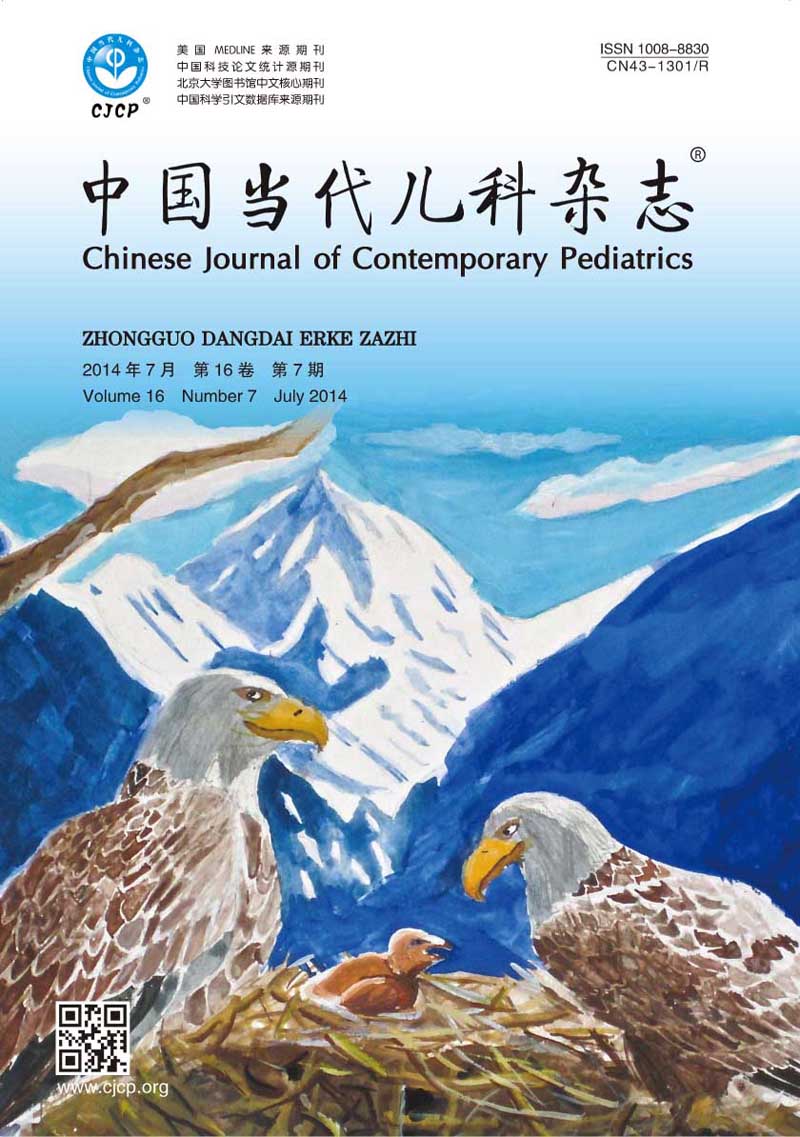
Objective To study the relationship between STXBP1 gene mutations and refractory seizures with unknown causes in newborns. Methods The coding region of STXBP1 gene was detected using direct Sanger sequencing in 11 newborns with refractory seizures of unknown causes. Results STXBP1 gene mutation was found in 1 out of 11 patients. It was a missense mutation: c.1439C>T (p.P480L). Conclusions STXBP1 gene mutation can be found in neonatal refractory seizures of unknown causes, suggesting a new approach of further research of this disease.
Objective To study the clinical features and pathogens of plastic bronchitis in children. Methods A retrospective analysis was performed on the clinical data of 9 children who were diagnosed with plastic bronchitis between January 2011 and December 2012. Results Plastic bronchitis began with a fever and cough in all cases, followed by progressive dyspnea on days 1-3 of onset; unilateral or bilateral decreased breath sounds and hepatosplenomegaly were found; complications included respiratory failure (6 cases), toxic encephalopathy (6 cases), toxic hepatitis (7 cases), shock (3 cases), heart failure (3 cases), and renal failure (2 cases). Chest X-ray or chest CT showed single and multiple lobar or segmental consolidation and atelectasis, as well as pleural effusion (4 cases). The bronchofibroscopy revealed some grey-white mucus plugs that blocked bronchial openings and aspirates of bronchial shape. Influenza viruses (IFVs) were detected in all cases, including IFV-A (6 cases, 67%) and IFV-B (3 cases, 33%). Mixed infection with IFV-A and Mycoplasma pneumoniae (MP)/bacteria was found in 50% of all cases. In the three cases of IFV-B infection, one was complicated by MP infection. Nine patients were given treatment of antibiotics, hormones, gamma globulin and necessary respiratory support, and also were given removal of endogenous foreign body by bronchoscopy. Five patients were given antiviral therapy of oseltamivir. Seven cases cured, and 2 died. Conclusions Plastic bronchitis and severe pneumonia are similar in clinical manifestations. IFVs are the main pathogen. In addition to anti-infection treatment, hormone, gamma globulin, respiratory support, and other conventional treatments, endogenous foreign body removal by bronchofibroscopy and early antiviral therapy with oseltamivir have good efficacy.